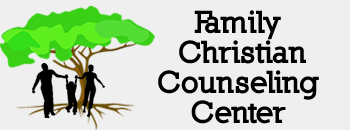Modalities used by Family Christian Counseling Center
I remember when I first started in my counseling program in college I thought "Why are there so many different modalities I have to study?”
In my years of practice I have come to realize there is no “one size fits all” in the counseling room. Many factors go into which modality fits your need: 1) your therapists training (no one can master all the modalities), 2) why you came into the counseling office (different modalities work better with different problems) and 3) different stages of life require different modalities. I hope the following summaries help you understand some of the modalities used at the Center.
Attachment Therapy
This therapy is nurture based and follows the brain research of Bruce Perry and models from Daniel Siegel and Holly Van Gulden. It includes Theraplay techniques and components of relational models such as Parent Child Interaction Therapy and Circle of Security.
EMDR
EMDR (Eye Movement and Desensitization and Reprocessing) is recognized as an effective form of trauma treatment in numerous practice guidelines worldwide. In the US, this includes organizations such as the American Psychiatric Association and Department of Defense. More than twenty randomized studies support the effectiveness of the therapy in the treatment of PTSD. Further, more than twenty randomized studies have demonstrated positive effects of the eye movements. Eye Movement Desensitization and Reprocessing (EMDR) is a comprehensive, integrative psychotherapy approach. It contains elements of many effective psychotherapies in structured protocols that are designed to maximize treatment effects. These include psychodynamic, cognitive behavioral, interpersonal, experiential, and body-centered therapies.
Play Therapy
Play Therapy is a structured, theoretically based approach to therapy that builds on the normal communicative and learning processes of children (Carmichael, 2006; Landreth, 2002; O'Connor & Schaefer, 1983). The curative powers inherent in play are used in many ways. Therapists strategically utilize play therapy to help children express what is troubling them when they do not have the verbal language to express their thoughts and feelings (Gil, 1991). In play therapy, toys are like the child's words and play is the child's language (Landreth, 2002). Through play, therapists may help children learn more adaptive behaviors when there are emotional or social skills deficits (Pedro-Carroll & Reddy, 2005). Play therapy and Neurobiology.
Canine Assisted Therapy
Trained therapy dogs are used by licensed therapists to facilitate processing and healing. Medical research consistently shows that the interaction between a person and a pet can be physically and psychologically beneficial. Indicators of such beneficial interaction include: 1) Lower blood pressure. slower pulse rate, 2) Decreased depression, anxiety and isolation, and 3) Increased sense of well being and confidence.
Neurosequential Model of Therapy
The Neurosequential Model is a developmentally-informed, biologically-respectful approach to working with at-risk children.
The Neurosequential Model is not a specific therapeutic technique or intervention; it is a way to organize a child’s history and current functioning. The goal of this approach is to structure assessment of a child, the articulation of the primary problems, identification of key strengths and the application of interventions (educational, enrichment and therapeutic) in a way that will help family, educators, therapists and related professionals best meet the needs of the child.
Gottman Marriage Therapy
The Gottman Method was developed by Dr. John Gottman and his wife Dr. Julie Schwartz Gottman in the 1980s. It is an evidence-based form of couples therapy that strives to assist couples in achieving a deeper sense of understanding, awareness, empathy, and connectedness within their relationships that ultimately leads to heightened intimacy and interpersonal growth. By combining therapeutic interventions with couples exercises, this type of therapy helps couples identify and address the natural defenses that hinder effective communication and bonding. Click for more information about the Gottman method.
Sand Tray Therapy
Sand tray therapy is an effective tool in trauma and grief counseling. The tactile, nonverbal experience promotes awareness of deeply personal emotional issues with a safe, therapeutic environment. This therapy provides a medium to 1) establish safety, 2) reconstruct the trauma story, and 3) restore connections with the community. The arrangement of figures in sand reflects the client's inner word and evokes metaphors and healing narratives that provide understanding of the trauma story.
Sensorimotor Therapy
Sensorimotor Psychotherapy is a method for facilitating the processing of unassimilated sensorimotor reactions to trauma and for resolving the destructive effects of these reactions on cognitive and emotional experience.
Narrative Story Telling
The term “narrative therapy” has a specific meaning and is not the same as narrative psychology, or any other therapy that uses stories. Narrative therapy refers to the ideas and practices of Michael White, David Epston, and other practitioners who have built upon this work. The narrative therapist focuses upon narrative in the therapy. The narrative therapist is a collaborator with the client in the process of developing richer (or “thicker”) narratives. In this process, narrative therapists ask questions to generate experientially vivid descriptions of life events that are not currently included in the plot of the problematic story.
Drama Therapy
Drama Therapy is the use of theater techniques to facilitate personal growth and promote mental health. Drama therapy is used in a wide variety of settings, including hospitals, schools, mental health centers, prisons, and businesses. Drama Therapy, as a form of Expressive Arts Therapy, (also known as Expressive Therapy), exists in many forms and can be applicable to children, individuals, couples, and families.
“Nobody can go back and start a new beginning, but anyone can start
today and make a new ending.” - Maria Robinson
